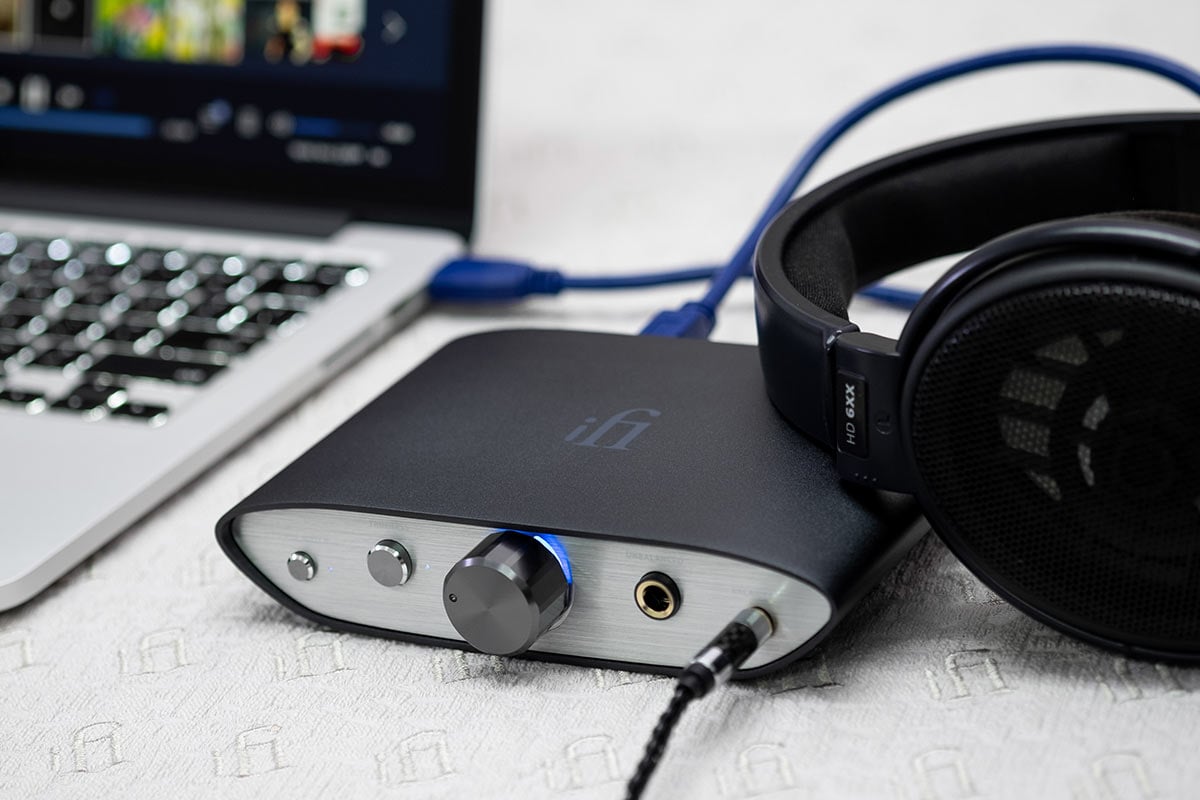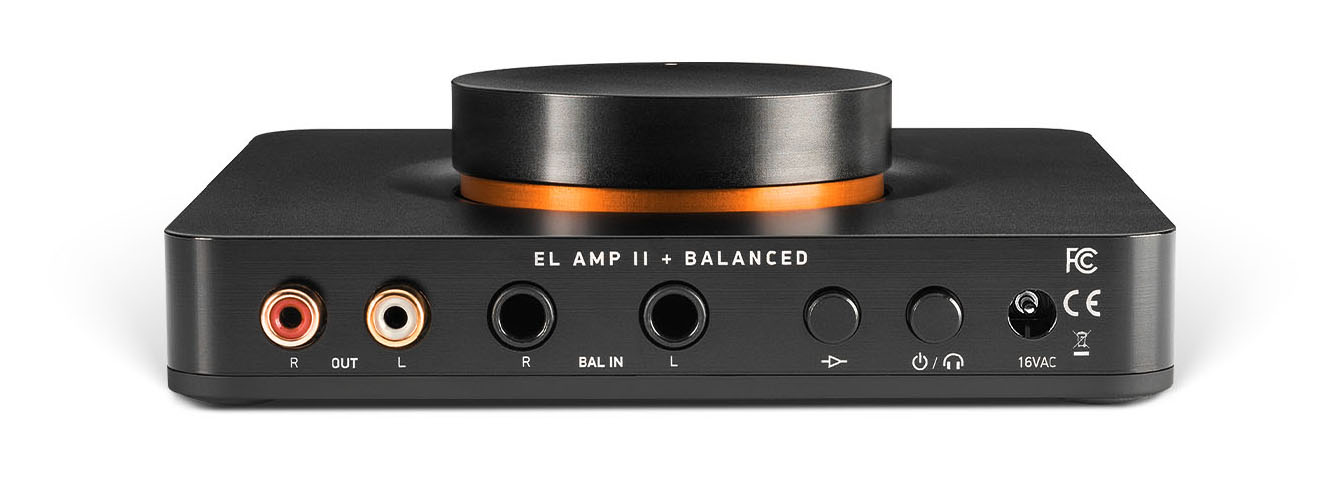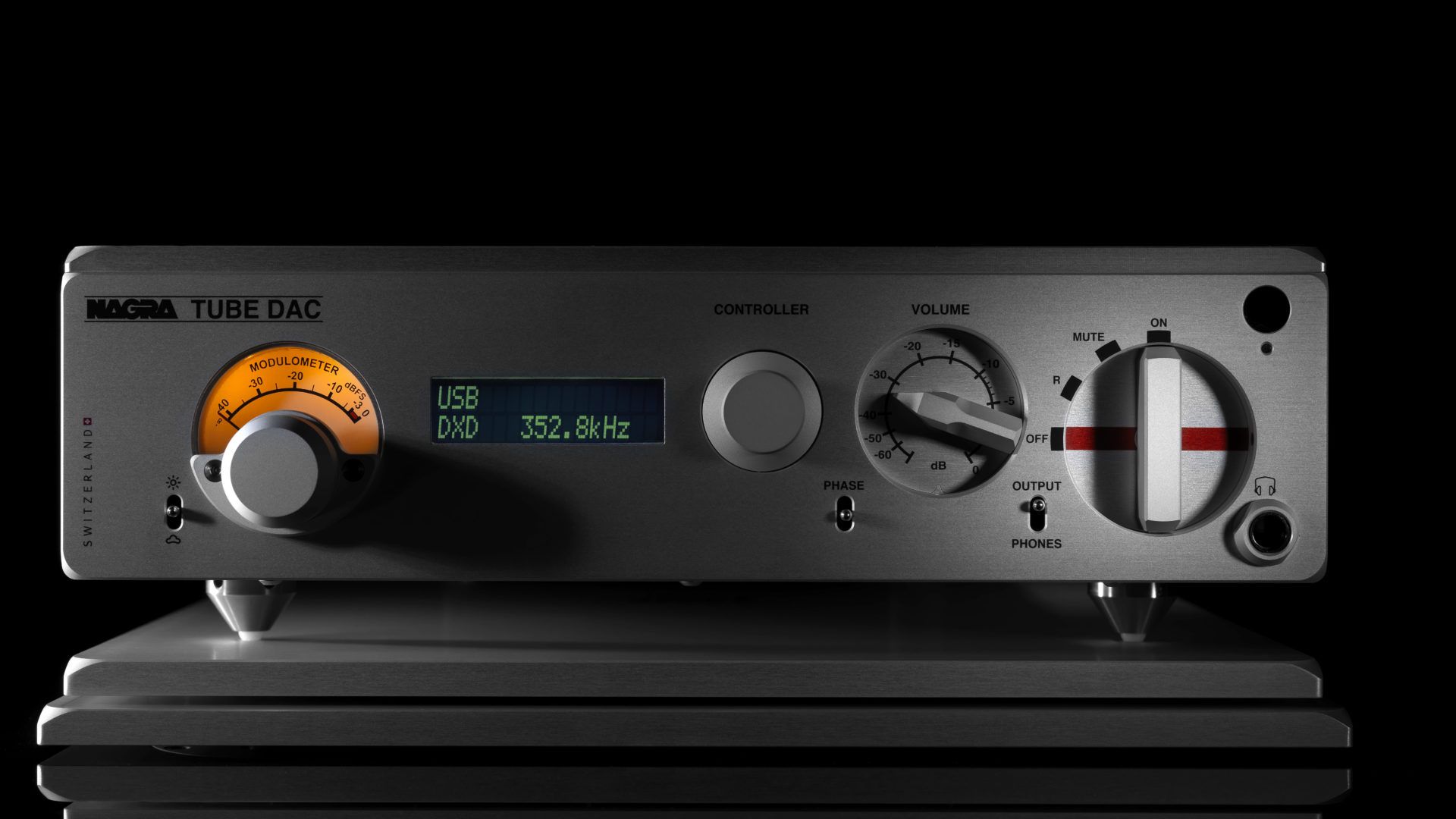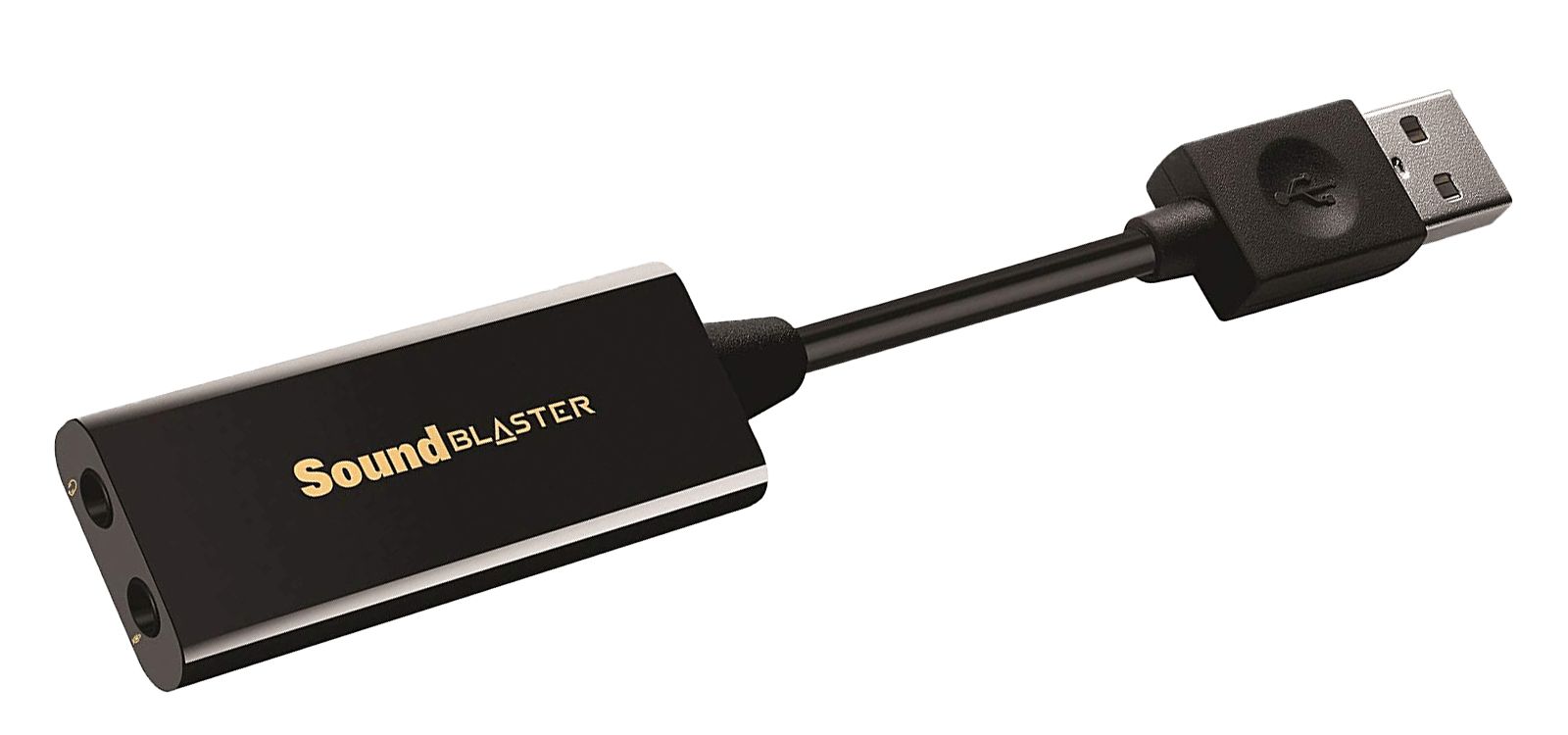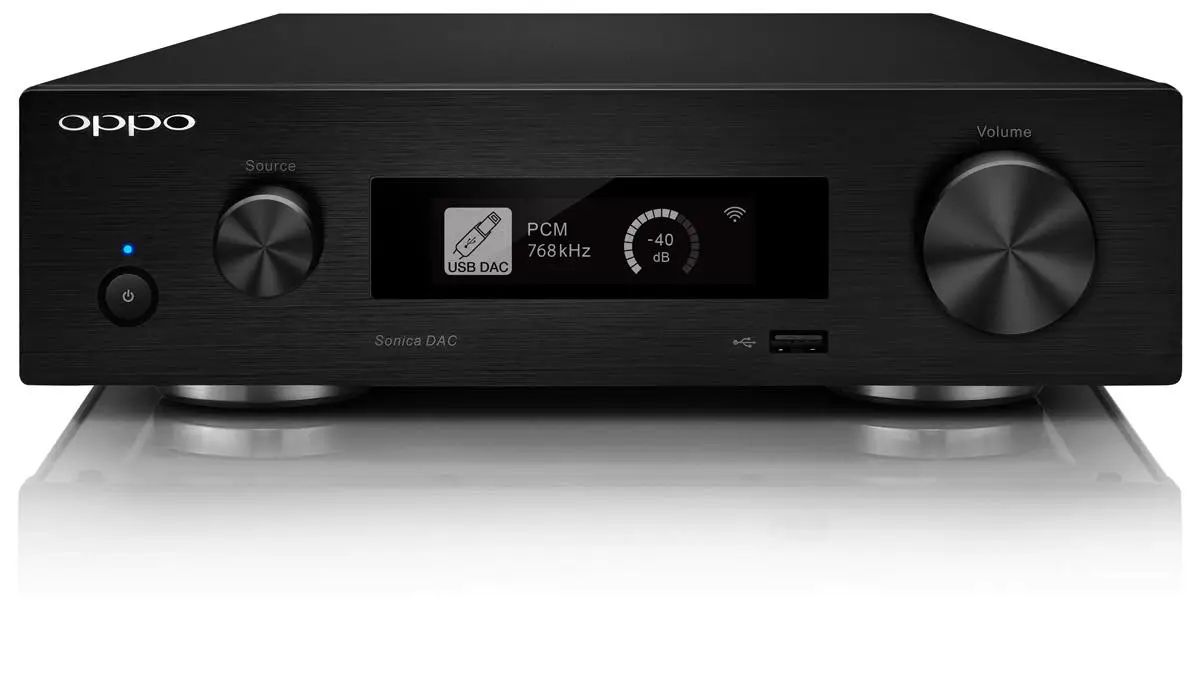Introduction
The world of audio systems is a fascinating realm where technology and artistry converge to create captivating sound experiences. At the heart of these systems lies a crucial component known as the Digital-to-Analog Converter, or DAC. This unassuming yet powerful device plays a pivotal role in transforming digital audio signals into the rich, analog sound waves that we perceive and cherish.
In the digital age, where most audio content is stored and transmitted in digital formats, the significance of DACs cannot be overstated. Whether you're streaming music from a digital platform, enjoying the immersive sound of a video game, or savoring the intricacies of a high-definition movie soundtrack, the DAC quietly works its magic behind the scenes, ensuring that the digital signals are faithfully translated into the enchanting sounds that reach our ears.
As we delve deeper into the world of DACs, we will unravel their inner workings, explore the various types available, and gain insights into the factors that influence their performance. Understanding the pivotal role of DACs in audio systems will not only enhance our appreciation for the technology that enriches our auditory experiences but also empower us to make informed decisions when selecting audio equipment.
Join me on this journey as we embark on an exploration of DACs, uncovering the intricacies that make them indispensable in the realm of audio systems. Let's unlock the secrets behind the seamless conversion of digital signals into the melodic symphonies that resonate with our souls.
What is a DAC?
A Digital-to-Analog Converter, commonly referred to as a DAC, is a fundamental component in the realm of audio technology. Its primary function is to convert digital audio signals, typically in the form of binary code, into analog signals that can be amplified and transmitted as sound waves through speakers or headphones. In essence, the DAC bridges the gap between the digital realm, where audio data is stored and processed, and the analog world, where we perceive sound as vibrations traveling through the air.
The process of digital-to-analog conversion is essential because most audio content, whether it's music, speech, or sound effects, is initially captured and stored in a digital format. This digital representation of audio is composed of discrete numerical values that correspond to the amplitude of the sound wave at specific points in time. When this digital audio data needs to be played back, it must be transformed into an analog signal that mirrors the original waveform, enabling us to hear the intended sound.
At the core of a DAC lies a circuitry that performs intricate calculations to reconstruct the continuous analog waveform from the discrete digital samples. This involves precise timing and voltage adjustments to accurately represent the original audio signal. The quality of a DAC is often evaluated based on its ability to faithfully reproduce the analog waveform, minimizing distortion and noise while preserving the nuances and dynamics of the original sound.
In modern audio systems, DACs are integrated into a variety of devices, including smartphones, computers, media players, and dedicated audio equipment. They can also be found in external units or as built-in components within amplifiers, receivers, and other audio gear. The performance of a DAC can significantly impact the overall sound quality, making it a critical consideration for audiophiles and anyone who values an immersive and authentic audio experience.
In summary, a DAC serves as the crucial link that enables digital audio content to be translated into the captivating sounds that enrich our lives. Its ability to accurately convert digital signals into analog waveforms is pivotal in delivering high-fidelity audio, allowing us to immerse ourselves in the symphonies, melodies, and voices that resonate with our emotions and memories.
Importance of DACs in Audio Systems
The significance of Digital-to-Analog Converters (DACs) in audio systems cannot be overstated. These unassuming yet powerful devices play a pivotal role in ensuring that digital audio signals are faithfully transformed into the rich, analog sounds that captivate our senses. Whether we're streaming music, indulging in gaming experiences, or immersing ourselves in cinematic soundscapes, the performance of DACs directly influences the quality of our auditory experiences.
At the core of their importance lies the seamless conversion of digital signals into analog waveforms. This process is essential for maintaining the integrity and fidelity of the original audio content. Without high-quality DACs, the nuances, dynamics, and subtleties of the sound would be compromised, leading to a diminished audio experience.
In the realm of high-fidelity audio, where enthusiasts seek to capture the full spectrum of sonic details, the role of DACs becomes even more critical. Audiophiles and audio professionals rely on top-tier DACs to ensure that every musical note, vocal inflection, and ambient sound is accurately reproduced with precision and clarity. The impact of a high-quality DAC extends beyond mere technical specifications; it translates into an emotional connection with the music and audio content, allowing listeners to experience the intended artistic expression in its purest form.
Furthermore, the widespread adoption of digital audio formats in modern music production, streaming services, and entertainment platforms underscores the pervasive influence of DACs. From studio recordings to online music libraries, DACs are instrumental in preserving the integrity of the audio content throughout the playback chain, ensuring that the sonic essence crafted by artists and creators is faithfully conveyed to the listeners.
In the context of consumer audio devices, such as smartphones, computers, and portable media players, the quality of the integrated DAC directly impacts the overall sound performance. As consumers seek immersive and high-fidelity audio experiences, manufacturers are compelled to prioritize the inclusion of advanced DAC technology to meet the discerning demands of the market.
In essence, the importance of DACs in audio systems transcends technical specifications and industry jargon. It resonates with the very essence of our auditory experiences, shaping the way we perceive and connect with music, speech, and soundscapes. As we continue to embrace the digital evolution of audio, the role of DACs remains indispensable in preserving the artistry and emotional impact of sound, enriching our lives with the timeless magic of music and audio storytelling.
Types of DACs
When exploring the diverse landscape of Digital-to-Analog Converters (DACs), it becomes evident that these essential components come in various forms, each with distinct characteristics and applications. Understanding the different types of DACs provides valuable insights into their functionalities and suitability for specific audio systems and use cases.
-
R-2R Ladder DAC: This type of DAC utilizes a network of resistors arranged in a ladder-like configuration, enabling precise voltage division to generate analog outputs. R-2R ladder DACs are known for their simplicity and robustness, making them suitable for applications where accuracy and linearity are crucial.
-
Delta-Sigma DAC: Employing a sophisticated modulation technique known as delta-sigma modulation, these DACs excel in achieving high resolution and low noise performance. Delta-sigma DACs are commonly found in high-end audio equipment and digital audio interfaces, where uncompromising audio quality is paramount.
-
Pulse Width Modulation (PWM) DAC: Operating by varying the width of pulse signals, PWM DACs offer a cost-effective solution for audio applications that require efficient digital-to-analog conversion. Their simplicity and versatility make them suitable for diverse consumer electronics and embedded audio systems.
-
Segmented DAC: This type of DAC divides the digital input into segments, each corresponding to a specific voltage level, and combines them to produce the analog output. Segmented DACs are valued for their ability to achieve high-speed conversion and are often utilized in instrumentation and communication systems.
-
String DAC: Utilizing a string of resistors with precise values, string DACs offer a straightforward yet effective approach to digital-to-analog conversion. They find applications in audio processing, sensor interfaces, and industrial control systems, where reliability and accuracy are paramount.
-
Current Steering DAC: Known for their ability to deliver high-speed performance and wide dynamic range, current steering DACs utilize current sources to generate analog outputs. These DACs are favored in applications that demand rapid signal processing and exceptional signal-to-noise ratio.
Understanding the characteristics and operational principles of these diverse DAC types empowers audio enthusiasts, engineers, and industry professionals to make informed decisions when selecting DACs for their specific requirements. Whether pursuing audiophile-grade sound reproduction, designing cutting-edge audio equipment, or integrating DACs into consumer electronics, the array of DAC types offers a spectrum of possibilities to cater to the evolving landscape of audio technology.
Factors to Consider When Choosing a DAC
When navigating the myriad of Digital-to-Analog Converters (DACs) available in the market, several crucial factors come into play, influencing the selection process and ultimately shaping the audio experience. Understanding these key considerations empowers individuals to make informed decisions when choosing a DAC that aligns with their specific needs and preferences.
-
Audio Quality: The foremost consideration when selecting a DAC revolves around its ability to deliver exceptional audio quality. Factors such as signal-to-noise ratio, total harmonic distortion, and dynamic range play pivotal roles in determining the fidelity and clarity of the analog output. Audiophiles and discerning listeners prioritize DACs with high-quality components and meticulous engineering to ensure an immersive and authentic sound reproduction.
-
Compatibility and Connectivity: Assessing the compatibility of a DAC with existing audio equipment and devices is essential. Whether integrating a DAC into a home audio system, studio setup, or portable music player, ensuring seamless connectivity and support for various digital audio formats, such as PCM, DSD, and MQA, is crucial for a hassle-free user experience.
-
Sampling Rate and Bit Depth: The sampling rate and bit depth capabilities of a DAC directly impact its ability to accurately reproduce audio signals. Higher sampling rates and bit depths contribute to greater precision and resolution, especially when handling high-definition audio content. Understanding the desired audio fidelity and format compatibility guides the selection of a DAC with suitable sampling and bit resolution.
-
Form Factor and Portability: For individuals seeking portable audio solutions or compact setups, the form factor and portability of a DAC become significant considerations. Whether opting for a standalone DAC, USB-powered unit, or integrated DAC/amplifier combo, the physical dimensions and power requirements influence the practicality and versatility of the chosen device.
-
Feature Set and Controls: Evaluating the feature set and user controls offered by a DAC enhances the overall user experience. Features such as selectable filters, digital volume control, input/output options, and compatibility with audio enhancement technologies contribute to the flexibility and customization potential of the DAC within different audio setups and usage scenarios.
-
Budget and Value Proposition: Balancing the budgetary considerations with the desired features and performance attributes is essential when choosing a DAC. Assessing the value proposition, longevity, and potential for future upgrades aids in making an informed investment that aligns with individual preferences and long-term audio aspirations.
By carefully weighing these factors and aligning them with personal audio preferences, usage scenarios, and equipment compatibility, individuals can navigate the diverse landscape of DACs with confidence, ultimately selecting a device that elevates their audio experiences and amplifies the joy of immersive soundscapes.
Conclusion
In conclusion, the role of Digital-to-Analog Converters (DACs) in audio systems is nothing short of transformative. These unassuming yet pivotal components serve as the bridge between the digital realm, where audio content resides as binary data, and the analog world, where we perceive sound as the symphony of vibrations. Throughout our exploration of DACs, we've uncovered their significance, operational principles, diverse types, and the critical factors influencing their selection.
At the heart of it all lies the pursuit of audio fidelity and the preservation of artistic expression. Whether we're savoring the nuances of a classical composition, immersing ourselves in the sonic landscapes of virtual realities, or simply enjoying the melodies that accompany our daily lives, DACs play a fundamental role in shaping our auditory experiences. Their ability to faithfully translate digital signals into captivating analog sound waves directly impacts the emotional resonance and immersive quality of the audio content we cherish.
The array of DAC types, from R-2R ladder DACs to delta-sigma DACs and beyond, offers a spectrum of possibilities for audio enthusiasts, engineers, and industry professionals. Understanding the unique characteristics and applications of each type empowers individuals to tailor their audio setups and equipment to meet specific requirements, whether it's achieving audiophile-grade sound reproduction, designing cutting-edge audio systems, or integrating DACs into consumer electronics.
Furthermore, the considerations that guide the selection of a DAC, including audio quality, compatibility, sampling rate, portability, feature set, and budget, underscore the depth of thought and personalization involved in curating an enriching audio experience. By aligning these considerations with individual preferences and usage scenarios, individuals can make informed decisions that elevate their audio experiences and amplify the joy of immersive soundscapes.
As we continue to embrace the digital evolution of audio, the role of DACs remains indispensable in preserving the artistry and emotional impact of sound. Their seamless conversion of digital signals into analog waveforms ensures that the magic of music, storytelling, and sonic expression continues to captivate our senses and enrich our lives. With each note, chord, and rhythm faithfully rendered by DACs, the timeless allure of audio experiences persists, inviting us to immerse ourselves in the boundless symphonies of sound.
In essence, the journey through the realm of DACs unveils a profound appreciation for the technology that enriches our auditory experiences and empowers us to embrace the transformative power of sound, one digital-to-analog conversion at a time.









